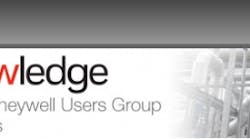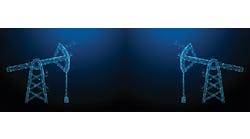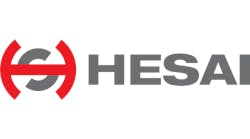The Industrial Internet of Things (IIoT) will change the way you do business—from the way you design and operate the plant to the way you manage the supply chain. Analytics can leverage existing technologies, as well as inspire new ones that change where and when work is done. Big data transforms organizations and processes. But don’t forget to include your subject matter experts (SMEs) in your plans for the future.
“IIoT solves old problems in new and innovative ways,” explained Tathagata Basu, director, Honeywell Connected Plant, North America, at Honeywell Process Solutions. Basu spoke on demystifying analytics, cloud and IIoT at Honeywell Users Group (HUG) 2017 in San Antonio, Texas. “We can do it much better, much faster and more efficiently.
“There will be 40 exabytes of unique new information generated worldwide this year. Getting access to information and putting it in the cloud—closing the gap and using IIoT as the platform and doing predictive and prescriptive analytics to drive the action—is the big difference.”
As the IT organization becomes part of the IIoT conversation, the need to involve process engineers and the operations team is important, so that data is properly contextualized. “Subject matter expertise becomes increasing critical,” said Basu. “If you aren’t able to collaborate with the IT organization, the IT organization is going to drive the agenda. The goal of analytics is to provide information for improved decisions and actions for economic benefit.”
The opportunities for processing industry plants haven’t changed, emphasized Basu. “What has changed is how we apply technologies to solve problems,” he explained. “Maximizing automation and minimizing human input are not always the goals. Analytics should be suited to the use case.”
Four levels of analytics—descriptive, diagnostic, predictive and prescriptive— can be applied to plant data, each level requiring a different degree of human interpretation.
“Descriptive analytics give you a view of what happened in the past. It’s not new,” explained Basu. “The diagnostics part tells you why it happened. It marries the real-time information with historical data and gives you some context. Predictive analytics are based on information in the past, so we can predict what will happen.
“What is really going to change your organization is prescriptive analytics. You bring in the causal information, and you have a recognition tool. It tells you what to do. It gives you decision support and decision automation. And it often involves machine learning and artificial intelligence.”
All four levels of analytics can be done right now, explained Paul Bonner, vice president, consulting & data analytics, Honeywell Connected Plant. Honeywell has partnered already with a variety of companies able to provide those different levels of analytics.
New frontiers
A variety of key developing technologies are ripe for leveraging:- High-bandwidth communication and massive storage in the cloud,
- Low-cost pervasive sensor technology,
- Advanced analytics technologies and machine learning, and
- Device interoperability standards.
But IIoT and cloud analytics enable additional efforts, such as:
- Remote collaboration,
- Centers of excellence,
- Capture and application of knowledge, and
- Routine monitoring done by machines.
“If you think back a few years when open systems first came out, there was a battle going on between the automation people and the IT people,” Bonner reminded the large group of session attendees. “That gradually settled over time. But we’re seeing a resurgence of that friction between IT and automation with the development of the cloud. You need to have a say in the outcome, or you’ll have it brought down on you from your IT department.”
Connect people, assets and processes
A connected plant means connected people, connected assets and connected processes. “What is ‘connected process?’” asked Basu. “We use real-time plant data with advanced software, analytics and plant process models to deliver operational improvements and increase reliability. Connected assets mean making sure you securely get data from edge devices. And to connect people, we equip your workforce with new tools to do their jobs better and more safely, increasing their competency and collaboration enterprise-wide.”
The connected plant relies of big data and cloud analytics, but don’t be fooled by the all-too-common misconceptions surrounding IIoT’s actual features and benefits. Bonner debunked many of the myths.
Myth 1: Storing big data in the cloud is cheap or free. “People think they can put unlimited amounts of data in the cloud,” explained Bonner. “The truth is, you pay when you store. And then you pay about five times more than that when you retrieve it. You need to look at where you store the data. Where possible, pull high-frequency data and use it at the edge.”
Myth 2: Big data and analytics replace the need for process knowledge/engineering experience. “You need to be able to combine them with process engineering experience and expertise,” said Bonner.
Myth 3: Data analytics is a replacement for fundamental models.
Myth 4: You don’t need good data as long as you have a lot of data. “Rare events are a good example of this,” explained Bonner. “The only data that will help is that same rare-event data from a previous event.”
Myth 5: You don’t need to change your work processes to get full value from big data. “It’s going to let you make faster decisions lower in your organization,” said Bonner. “If you don’t change processes, you won’t get full value.”
Myth 6: All analytics software is about the same; it is all shareware downloaded from the Internet. “The productivity you’ll get from that software isn’t efficient or scalable,” explained Bonner. “You need commercially available software.”
Cybersecurity and the digital twin
Every potential user looks at connectivity and its security risks with the same skeptical eye once used to assess wireless communication. But the advantages of integrated layers of secure, IIoT-ready solutions are too enticing to ignore:
- Data from smart and connected assets and devices using OPC-UA and 4G,
- Data management and on-site control—connectivity through all levels and process and business operations,
- Predictive analytics for Web-based visualization and remote equipment monitoring, and
- Smart and secure collaboration.
“It’s about creating a connected plant with a digital twin,” said Basu. “The digital twin is a model of your physical assets, and it gives the users a view of your assets that is comprehensive and contextual. That understanding and context comes from using the subject matter experts to apply the technology.”




